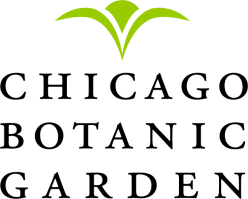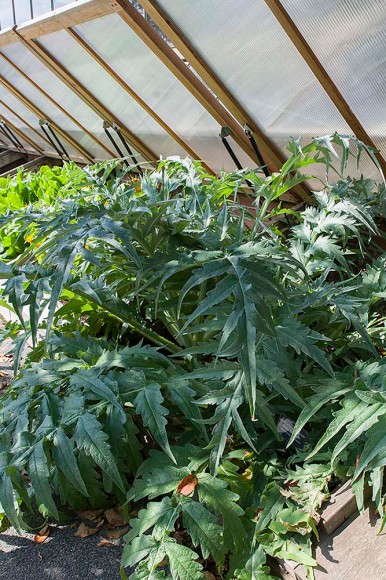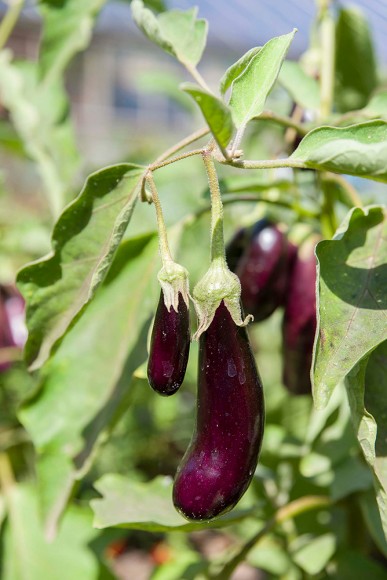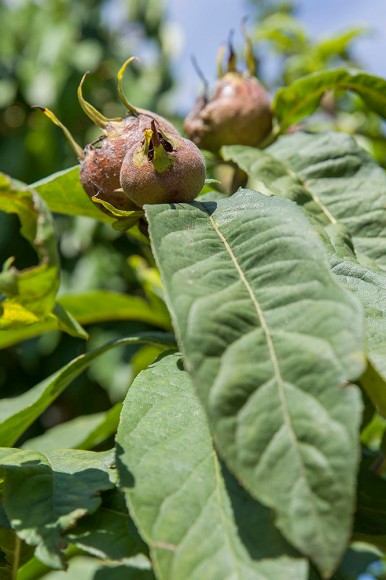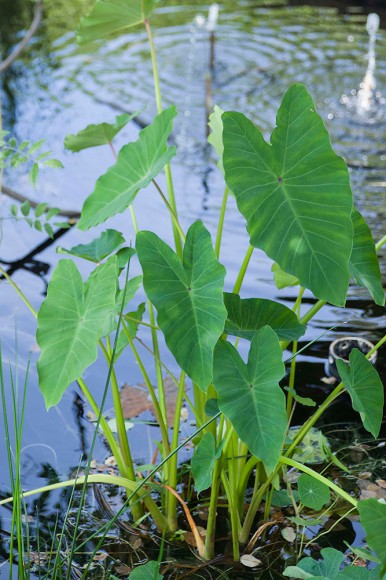“What is that?”
Sure, you’ll see tomatoes and corn and apples at the Regenstein Fruit & Vegetable Garden—but, during the course of the growing season, we have more than 400 of the earth’s 30,000+ edible plants to see, consider, and think about cooking.
How many of the ten summer fruits and vegetables below do you recognize? Come see them in person soon—harvest is just around the corner!
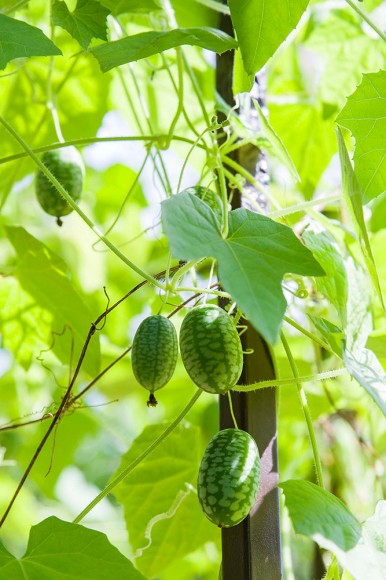
5. It’s a Mexican miniature watermelon, or gherkin. Melothria scabra grows as a vine, with dozens of cute and cucumbery fruits. Eat them fresh or pickled. You’ll find them in containers under the wisteria arbor.

6. It’s a tomato. Lycopersicon esculentum has a new member in the family and…it’s blue. ‘Indigo Rose’ was bred (at Oregon State) for high anthocyanin levels, which suppressed green color while raising purple. It’s full of antioxidants and is not a GMO (it’s open-pollinated). It’s a sensation. Find it in our Backyard Garden beds and the Small Space Garden.
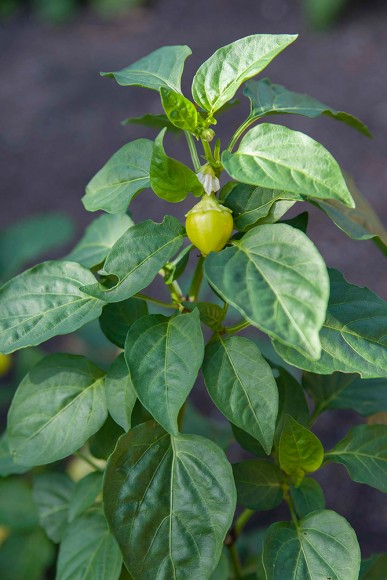
7. It’s a pepper. Capsicum annuum var. lycopersiciforme ‘Alma Paprika’ looks rather like a tomato as it turns from white to yellow to red. As its name suggests, this is the variety from which paprika is made—let it dry, then grind it to make your own.
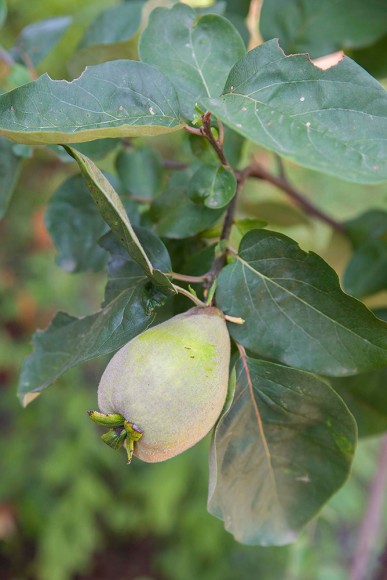
8. It’s a quince. Cydonia oblonga is the fruit-bearing quince (different than flowering quince). In this country, many people are unfamiliar with both the look of the fruit (like a bumpy pear) and its taste (often sour and astringent, it requires cooking). Currently loaded with fruit, the quince tree is near the grape arbor.
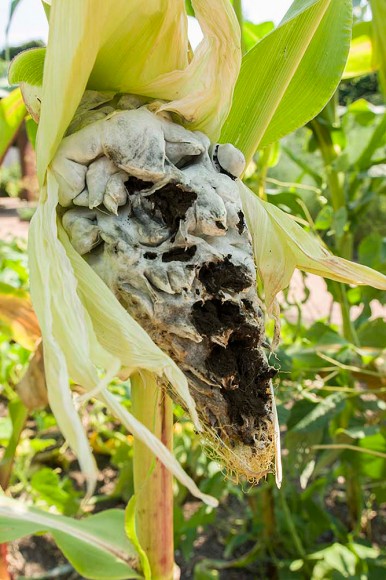
9. It’s a fungus. Ustilago maydis is known as Huitlacoche in Mexico, where the fungus—called corn smut here—is considered a delicacy. It occurs naturally on ears of corn—we’ve found one ear with it in our Backyard Garden so far.
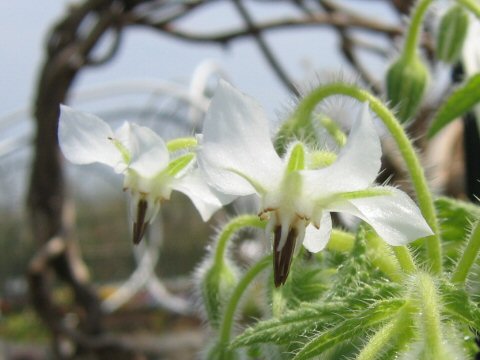
10. It’s borage. Borago officinalis is a multitasker: the gorgeous blue flowers are edible and can be steeped as tea, the leaves add cucumber freshness to a salad, and the plant itself attracts tomato hornworms away from your tomatoes. Turn right after the bridge to see borage in the beds there. Ours, however, are the cultivar ‘Alba’—which, as you may guess, has a white flower.
©2013 Chicago Botanic Garden and my.chicagobotanic.org
